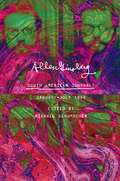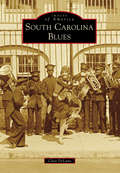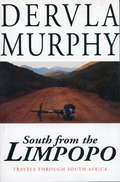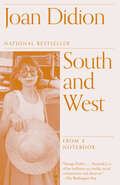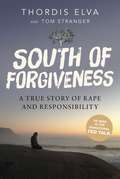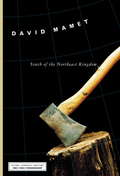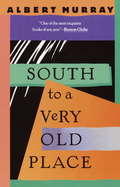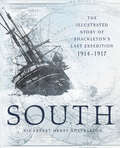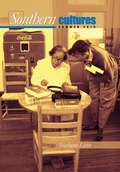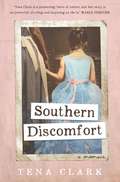- Table View
- List View
Sous Chef: 24 Hours on the Line
by Michael GibneyThe back must slave to feed the belly. . . . In this urgent and unique book, chef Michael Gibney uses twenty-four hours to animate the intricate camaraderie and culinary choreography in an upscale New York restaurant kitchen. Here readers will find all the details, in rapid-fire succession, of what it takes to deliver an exceptional plate of food--the journey to excellence by way of exhaustion. Told in second-person narrative, Sous Chef is an immersive, adrenaline-fueled run that offers a fly-on-the-wall perspective on the food service industry, allowing readers to briefly inhabit the hidden world behind the kitchen doors, in real time. This exhilarating account provides regular diners and food enthusiasts alike a detailed insider's perspective, while offering fledgling professional cooks an honest picture of what the future holds, ultimately giving voice to the hard work and dedication around which chefs have built their careers. In a kitchen where the highest standards are upheld and one misstep can result in disaster, Sous Chef conjures a greater appreciation for the thought, care, and focus that go into creating memorable and delicious fare. With grit, wit, and remarkable prose, Michael Gibney renders a beautiful and raw account of this demanding and sometimes overlooked profession, offering a nuanced perspective on the craft and art of food and service.
South
by Ernest ShackletonExemplary British expedition leader Sir Ernest Shackleton's (1874-1922) compelling account of his 1914 Imperial Trans-Antarctic Expedition consisting of two ships, the HMS Endurance and the HMS Aurora. The goal of the expedition (which it failed to achieve, but not for want of perseverance) was to cross the Antarctic by dogsled, exploring unknown territory and making scientific observations along the way. The plan called for the Endurance, with Shackleton aboard, to establish a base on the shore of the Weddell Sea, while the Aurora did the same at the Ross Sea on the opposite side of the continent. It is a tribute to Shackleton's remarkable energy, his tireless persistence, and his admirable leadership qualities that all members of the Weddell Sea party survived the extraordinary hazards and dangers encountered by the expedition, as did all but three members of the Ross Sea party. Though overshadowed at the time by the outbreak of World War I, the feats of Shackleton and his companions in this expedition are now recognized as ranking among the most memorable in the annals of Antarctic exploration.
South American Journals: January–July 1960
by Allen GinsbergThe great Beat poet&’s observations, reflections, poetry, and mind-expanding explorations while traveling through South America When Allen Ginsberg went to South America in 1960, ostensibly to attend a literary conference, he had a different kind of trip in mind. This would be another experience in the Beat poet&’s journey deep into the realm of consciousness, the inward travel explored to exhilarating effect in his writing—whether in the poetry that had already earned him international acclaim or in the idiosyncratic journals that raised self-documentation to a new form of art. In his South American Journals, covering a tumultuous six months, Ginsberg describes his travels through Chile and Peru, his visit to Machu Picchu, and his search for a source for ayahuasca, or yagé, a mind-expanding drug recommended by his friend William S. Burroughs, another writer well traveled in altered states of consciousness.Far from quotidian diary entries, Ginsberg&’s observations in these pages, interspersed with poetry, dream notations, and musings about spirituality, amount to a critical chapter in the poet&’s informal autobiography. Writing more during these six months than in any of his other journals, Ginsberg summons great ferment. In his distinctive accounts of all that he encounters, elevating travel writing to lyrical expression; in an abundance of poems published here for the first time, in both first drafts and polished forms; in his reports of fascinating conversations; and, in particular, in detailed passages that delve into inner recesses of his consciousness, Ginsberg recreates a journey like no other, one that reflects the workings of one of the best minds of his generation in the world of his own making and in its mysterious, immutable counterpart in the South American landscape.
South Away: The Pacific Coast on Two Wheels
by Meaghan Marie HackinenSouth Away follows Meaghan Marie Hackinen and her sister in the adventure of a lifetime: bicycling from Terrace, BC down the West Coast to (almost) the tip of the Baja Peninsula. Along the way Hackinen battles with the elements in Vancouver Island’s dense northern forests and frigid Mexican deserts; encounters strange men, suicidal highways and monster trucks; and makes some emergency repairs as tires and spokes succumb to the ravages of the journey. Luckily, the pair meet some good people along the way and glean some insight about the kindness of strangers.A rare road-trip story with two female leads, this travel memoir also chronicles an inner journey, as the author begins to better understand her relationship with her adventurous (and not-so-adventurous) family. South Away tells an engaging and personable tale, with imaginative and memorable depictions of land and sea along the ever-winding coast.Praise for South Away:"Everyone says 'Be careful,' but Meaghan Marie Hackinen wants to live large. South Away will fill your lungs with the fresh air of adventure and restore your faith in human goodness. An exhilarating debut."~ Candace Savage, author of A Geography of Blood and Strangers in the House"Hackinen’s journey is the quest of her dreams. Her sharp images of life on the road reveal that the world is more complex than she thought—and that sometimes people will let you camp on their front lawn."~ Nicole Haldoupis, editor of Grain Magazine and untethered
South Carolina Blues
by Clair DeluneThe history of South Carolina blues is a long, deep--and sometimes painful--story. However, it is a narrative with aspects as compelling as the music itself. Geographical differences in America led to variations in the styles of music that developed from African rhythms. The wet, marshy landscape and hot, muggy weather of the Carolina Lowcountry combined to cultivate not only rice, but a Gullah-based style of South Carolina blues. In drier climates, toward the Midlands and the Upstate, the combination of European influences led to the emergence of Piedmont blues, which in turn spawned country music as well as bluegrass. Those same Gullah roots resulted in four major dance crazes, starting with the Charleston.
South From the Limpopo
by Dervla MurphyThis powerful book places the complex and apparently insoluble problems of South Africa in a new light, and movingly exhibits the great love she and the people she met share for the country. Dervla Murphy has been recording her travel experiences—treks through (among other places) India, Transylvania, and several countries in Africa—for well over thirty years. In South from the Limpopo, she continues her writings on the African continent, bringing her unique insights to the still-troubled country of South Africa.
South From the Limpopo
by Dervla MurphyThis powerful book places the complex and apparently insoluble problems of South Africa in a new light, and movingly exhibits the great love she and the people she met share for the country. Dervla Murphy has been recording her travel experiences--treks through (among other places) India, Transylvania, and several countries in Africa--for well over thirty years. In South from the Limpopo, she continues her writings on the African continent, bringing her unique insights to the still-troubled country of South Africa.
South Jersey Movie Houses
by Allen F. HaussSince the early 1900s, when the first moving images flickered on the screens of storefront nickelodeons, going to the movies has been an integral part of life across America. By the 1950s, there were over 230 theaters in southern New Jersey, ranging from lavish palaces like the 2,000-seat Stanley in Camden to modest venues like the 350-seat Little in Haddonfield. Today, sadly, less than a dozen remain standing, and most of those are now used for other commercial purposes. Only the Broadway in Pitman continues to operate as the last of the original motion-picture palaces. South Jersey Movie Houses is a pictorial tour of the theaters that once raised their curtains to audiences across the southern part of the state. It offers a nostalgic look at their neon marquees and silver screens, bringing back memories of Saturday matinees, 3-D glasses, and movie date nights.
South Philadelphia's Little Italy and 9th Street Italian Market (Images of America)
by Michael DipillaWhen the first Italian moved to the area near Catherine Street around 1798, it was mostly forest and field. It was considered Irishtown by the early residents. By 1852, an Italian church had been established for the community, and from the advent of mass migration beginning in 1876 grew Philadelphia�s Little Italy. The original neighborhood was bound by the area from Sixth Street to Eleventh Street and Bainbridge to Federal Streets. Many of the early families�Baldi, Pinto, and Fiorella�established businesses in the area that continue today. Other beautiful buildings still left standing are remnants of the once thriving banking industry in this little neighborhood. As time progressed, the market expanded beyond its local neighbors. Italians throughout Philadelphia developed their own Little Italy communities to the north, west, and farther south of the original boundaries.
South Toward Home: Adventures and Misadventures in My Native Land
by Julia ReedIn considering the pleasures and absurdities of her native culture, Julia Reed quotes another Southern writer, Willie Morris, who said, “It’s the juxtapositions that get you down here.” These juxtapositions are, for Julia, the soul of the South, and in her warmhearted and funny new book, South Toward Home, she chronicles her adventures through the highs and the lows of Southern life—taking us everywhere from dive bars and the Delta Hot Tamale Festival to an impromptu shindig on a Mississippi River sandbar and a coveted seat on a Mardi Gras float. She writes about the region’s music and food, its pesky critters and prodigious drinking habits, its inhabitants’ penchant for making their own fun—and, crucially, their gift for laughing at themselves.With her distinctive voice and knowing eye, Julia also provides her take on the South’s more embarrassing characteristics from the politics of lust and the persistence of dry counties to the “seemingly bottomless propensity for committing a whole lot of craziness in the name of the Lord.” No matter what, she writes, “My fellow Southerners have brought me the greatest joy—on the page, over the airwaves, around the dinner table, at the bar or, hell, in the checkout line.” South Toward Home, with a foreword by Jon Meacham, is Julia Reed’s valentine to the place she knows and loves best.
South and West: From a Notebook
by Joan DidionNATIONAL BESTSELLER • &“One of contemporary literature&’s most revered essayists revives her raw records from a 1970s road trip across the American southwest ... her acute observations of the country&’s culture and history feel particularly resonant today.&” —Harper&’s Bazaar Joan Didion, the bestselling, award-winning author of The Year of Magical Thinking and Let Me Tell You What I Mean, has always kept notebooks—of overheard dialogue, interviews, drafts of essays, copies of articles. Here are two extended excerpts from notebooks she kept in the 1970s; read together, they form a piercing view of the American political and cultural landscape.&“Notes on the South&” traces a road trip that she and her husband, John Gregory Dunne, took through Louisiana, Mississippi, and Alabama. Her acute observations about the small towns they pass through, her interviews with local figures, and their preoccupation with race, class, and heritage suggest a South largely unchanged today. &“California Notes&” began as an assignment from Rolling Stone on the Patty Hearst trial. Though Didion never wrote the piece, the time she spent watching the trial in San Francisco triggered thoughts about the West and her own upbringing in Sacramento. Here we not only see Didion&’s signature irony and imagination in play, we&’re also granted an illuminating glimpse into her mind and process.
South from the Limpopo
by Dervla MurphyDervla Murphy's journal of her cycle tours of South Africa in 1994 gives a day-by-day view of that period.
South of Forgiveness: A True Story of Rape and Responsibility
by Elva Thordis Stranger TomOne ordinary spring morning in Reykjavik, Iceland, Thordis Elva kisses her son and partner goodbye before boarding a plane to do a remarkable thing: fly seven thousand miles to South Africa to confront the man who raped her when she was just sixteen. Meanwhile, in Sydney, Australia, Tom Stranger nervously embarks on an equally life-changing journey to meet Thordis, wondering whether he is worthy of this milestone. After exchanging hundreds of searingly honest emails over eight years, Thordis and Tom decided it was time to speak face to face. Coming from opposite sides of the globe, they meet in the middle, in Cape Town, South Africa, a country that is no stranger to violence and the healing power of forgiveness. South of Forgiveness is an unprecedented collaboration between a survivor and a perpetrator, each equally committed to exploring the darkest moment of their lives. It is a true story about being bent but not broken, facing fear with courage, and finding hope even in the most wounded of places. Personable, accessible, and compelling, South of Forgiveness is an intense and refreshing look at a gendered violence, rape culture, personal responsibility, and the effect that patriarchal cultures have on both men and women.
South of Somewhere: Wine, Food, and the Soul of Italy (At Table)
by Robert V. CamutoSouth of Somewhere begins and ends in American writer Robert Camuto&’s maternal ancestral town of Vico Equense, Italy—a tiny paradise south of Naples on the Sorrento Peninsula. It was here in 1968, at ten years old, that the author first tasted Italian life, spending his own summer of love surrounded by relatives at the family&’s seaside pizzeria and restaurant. He fell in love with a way of living and with the rhythms, flavors, and aromas of the Southern Mediterranean. Fifty years later, Camuto returns to Vico, connecting with family members and a new generation. A lot has changed: the old family restaurant has been razed and the seaside has been developed with hotels and restaurants, including a famous two-Michelin-starred restaurant in a medieval tower now owned by a younger cousin. Though there are more foreign visitors, the essentials of beauty, food, family bonds, and simplicity have not changed. And here Camuto finds hope that this way of life can continue. Camuto&’s fine-grained storytelling in this series of portraits takes us beyond the usual objective views of viniculture nto the elusive and magical world of Italian &“South-ness.&” While on one level able to create an instructive narrative about Southern Italy&’s twenty-first-century wine and cultural renaissance, Camuto&’s unswerving eye juxtaposes the good and the bad—immeasurable beauty and persistent blight, anti-mafia forces and corruption, hope for the future and fatalism—in a land that remains an infinite source of fascination and sensory pleasure.Watch book trailer #1.Watch book trailer #2.Watch book trailer #3.
South of the Northeast Kingdom
by David MametCompared to some of its New England neighbors, Vermont has seemed to long-time resident David Mamet a place of intrinsic energy and progressiveness, love and commonality. It has lived up to the old story that settlers came up the Connecticut River and turned right to get to New Hampshire and left to get to Vermont. Is Vermont's tradition of live and let live an accident of geography, the happy by-product of 200 years of national neglect, an emanation of its Scots-Irish regional character? Exploring the ways in which his decades in Vermont have shaped his character and his work, Mamet examines each of these strands and how the state's free-thinking tradition can survive in an age of increasing conglomeration. The result is a highly personal and compelling portrait of a truly unique place.
South to America: A Journey Below the Mason-Dixon to Understand the Soul of a Nation
by Imani PerryA Most Anticipated Book From: The New York Times • TIME • Oprah Daily • Vulture • Essence • Esquire • W Magazine • Atlanta Journal-Constitution • PopSugar • Book Riot • Chicago Review of Books • Electric Literature • Lit Hub. <p><p> An essential, surprising journey through the history, rituals, and landscapes of the American South—and a revelatory argument for why you must understand the South in order to understand America. <p><p> We all think we know the South. Even those who have never lived there can rattle off a list of signifiers: the Civil War, Gone with the Wind, the Ku Klux Klan, plantations, football, Jim Crow, slavery. But the idiosyncrasies, dispositions, and habits of the region are stranger and more complex than much of the country tends to acknowledge. In South to America, Imani Perry shows that the meaning of American is inextricably linked with the South, and that our understanding of its history and culture is the key to understanding the nation as a whole. <p><p> This is the story of a Black woman and native Alabaman returning to the region she has always called home and considering it with fresh eyes. Her journey is full of detours, deep dives, and surprising encounters with places and people. She renders Southerners from all walks of life with sensitivity and honesty, sharing her thoughts about a troubling history and the ritual humiliations and joys that characterize so much of Southern life. <p><p> Weaving together stories of immigrant communities, contemporary artists, exploitative opportunists, enslaved peoples, unsung heroes, her own ancestors, and her lived experiences, Imani Perry crafts a tapestry unlike any other. With uncommon insight and breathtaking clarity, South to America offers an assertion that if we want to build a more humane future for the United States, we must center our concern below the Mason-Dixon Line.
South to a Very Old Place
by Albert MurrayThe highly acclaimed novelist and biographer Albert Murray tells his classic memoir of growing up in Alabama during the 1920s and 1930s in South to a Very Old Place. Intermingling remembrances of youth with engaging conversation, African-American folklore, and astute cultural criticism, it is at once an intimate personal journey and an incisive social history, informed by "the poet's language, the novelist's sensibility, the essayist's clarity, the jazzman's imagination, the gospel singer's depth of feeling" (The New Yorker).
South with the Sun: Roald Amundsen, His Polar Explorations, and the Quest for Discovery
by Lynne CoxRoald Amundsen, "the last of the Vikings," left his mark on the Heroic Era as one of the most successful polar explorers ever. A powerfully built man more than six feet tall, Amundsen's career of adventure began at the age of fifteen (he was born in Norway in 1872 to a family of merchant sea captains and rich ship owners); twenty-five years later he was the first man to reach both the North and South Poles.Lynne Cox, adventurer and swimmer, author of Swimming to Antarctica ("gripping" --Sports Illustrated) and Grayson ("wondrous, and unforgettable" --Carl Hiaasen), gives us in South with the Sun a full-scale account of the explorer's life and expeditions.We see Amundsen, in 1903-06, the first to travel the Northwest Passage between the Atlantic and Pacific Oceans, in his small ship Gjøa, a seventy-foot refitted former herring boat powered by sails and a thirteen-horsepower engine, making his way through the entire length of the treacherous ice bound route, between the northern Canadian mainland and Canada's Arctic islands, from Greenland across Baffin Bay, between the Canadian islands, across the top of Alaska into the Bering Strait. The dangerous journey took three years to complete, as Amundsen, his crew, and six sled dogs waited while the frozen sea around them thawed sufficiently to allow for navigation. We see him journey toward the North Pole in Fridtjof Nansen's famous Fram, until word reached his expedition party of Robert Peary's successful arrival at the North Pole. Amundsen then set out on a secret expedition to the Antarctic, and we follow him through his heroic capture of the South Pole. Cox makes clear why Amundsen succeeded in his quests where other adventurer-explorers failed, and how his methodical preparation and willingness to take calculated risks revealed both the spirit of the man and the way to complete one triumphant journey after another. Crucial to Amundsen's success in reaching the South Pole was his use of carefully selected sled dogs. Amundsen's canine crew members--he called them "our children"--had been superbly equipped by centuries of natural selection for survival in the Arctic. "The dogs," he wrote, "are the most important thing for us. The whole outcome of the expedition depends on them." On December 14, 1911, Roald Amundsen and four others, 102 days and more than 1,880 miles later, stood at the South Pole, a full month before Robert Scott.Lynne Cox describes reading about Amundsen as a young girl and how because of his exploits was inspired to follow her dreams. We see how she unwittingly set out in Amundsen's path, swimming in open waters off Antarctica, then Greenland (always without a wetsuit), first as a challenge to her own abilities and then later as a way to understand Amundsen's life and the lessons learned from his vision, imagination, and daring.South with the Sun--inspiring, wondrous, and true--is a bold adventure story of bold ambitious dreams.From the Hardcover edition.
South: The Endurance Expedition (Penguin Modern Classics)
by Ernest ShackletonThe Imperial Trans-Antarctic Expedition was perhaps the most ambitious, elaborate and confident of all the British attempts to master the South Pole. Like the others it ended in disaster, with the Endeavour first trapped and then crushed to pieces in the ice and its crew trapped in the Antarctic, seemingly doomed to a slow and horrible death. In the face of extraordinary odds, Shackleton, the expedition's leader, decided on the only course that might just save them: a 700 nautical mile voyage in a small boat across the ferocious Southern Ocean in the forelorn hope of reaching the only human habitation within range: a small whaling station on the rugged, ice-sheeted island of South Georgia.South tells the story both of the whole astonishing expedition and of Shackleton's journey to rescue his men - one of the greatest feats of navigation ever recorded.
South: The Illustrated Story of Shackleton's Last Expedition, 1914–1917
by Ernest Henry ShackletonThe explorer’s classic account of adventure and survival in the Antarctic—with photos from the journey and color images of polar landscapes and animal life.In 1914, polar explorer Ernest Shackleton announced an ambitious plan to lead the Imperial Trans-Antarctic Expedition—the first trek across Antarctica from the Atlantic to the Pacific via the South Pole. Shackleton’s third expedition would be filled with adventure—and fraught with peril.South is the remarkable tale of that ill-fated expedition as told in Shackleton’s own words, and illustrated here with the photography of expedition photographer Frank Hurley, as well as modern color imagery of the fauna and stunning vistas the men encountered. Their story begins on the eve of World War I, when the ship Endurance departed from England with Shackleton and his team of six men. The plan was to travel 1,800 miles across the icy continent from the Atlantic side, while a second team, aboard the ship Aurora, would reach the Pacific side from Tasmania and lay out supply depots for the advancing team.As the Endurance approached the continent, however, it became hopelessly locked in an ice floe, beginning a series of travails including ice-covered mountainous islands, harrowing days in a life raft in hurricane-force winds, untested overland routes into the vast unknown, and more.South is the true story of a thrilling polar expedition—and never before has Shackleton’s lively prose been so extensively illustrated with such extraordinary images.
Southeast Florida Pioneers
by William E McGounThe history of the Palm Beach area, the Treasure Coast, and Lake Okeechobee is one of turbulence, growth, and especially change. Meet the visionaries and outlaws, physicians and poets who shaped this region of southeast Florida from the 1690s through the 1990s. Author William McGoun's stories are sometimes hair-raising, sometimes amusing, and always engaging.Well researched and dotted with photos from The Palm Beach Post archives, this collection of mini-biographies reads like a who's who of Florida history.
Southern Bred: Poems
by Charles GhignaDiscover the captivating allure of the Deep South through the haunting and powerful verses of one of today's most accomplished poets.Southern Bred is a haunting, powerful collection of gothic poems that captivate and transport the reader into the heart and soul of the Deep South. Each poem offers a glimpse into its mystery and enchantment, drawing you in with a blend of beauty and darkness. In the style of a memoir in verse, it showcases Ghigna's southern soul and his tender, yet piercing language, and affirms his place as one of the finest poets of our time.
Southern Charm: A Novel
by Tinsley MortimerA modern Manhattan fairy tale with the sparkle of a champagne cocktail, Tinsley Mortimer’s debut novel provides a delicious peek into her world of society, fashion, and big-city fame. SOUTHERN GIRL Minty Davenport has always dreamed of skyscrapers, yellow cabs, and a life like Eloise’s in New York City. So upon graduation from college, she bids adieu to Charleston and makes a beeline for the Big Apple. Almost instantly, she finds herself at an event being photographed for Women’s Wear Daily, and her career as a New York society “It Girl” is launched. As Minty navigates the ironclad customs of New York society, a blossoming love life, and a job working for a ruthless and powerful publicist, she finds that the rules a southern belle lives by—being nice to everyone, accentuating her femininity, and minding her manners—don’t necessarily guarantee success in Manhattan. She may indeed be accumulating new friends and opportunities along with boldfaced mentions and a very eligible bachelor boyfriend, but someone is plotting her very public downfall. When Minty gets to the top of the social ladder, she must decide if the glamorous life she thought she wanted is really everything she hoped it would be. Tinsley Mortimer’s insider observations about New York’s elite are deliciously witty, and the heart of her book is that of an irresistibly lovable young woman who is on the brink of finding her dream.
Southern Cultures: Southern Lives Issue
by Harry L. Watson Jocelyn NealIn this special Southern Lives issue:* Billy Carter dresses for all occasions.* Virginia Foster Durr opens her home to recently released inmates.* Michael McFee tours the Billy Graham Library.* Septima Poinsette Clark celebrates fellow Civil Rights pioneers.* Albert Murray goes on the record about Ralph Ellison's style.* Margaret Walker Alexander reveals her takes on Langston Hughes, Toni Morrison, and Alice Walker.... and much more.Southern Cultures is published quarterly (spring, summer, fall, winter) by the University of North Carolina Press. The journal is sponsored by the University of North Carolina at Chapel Hill's Center for the Study of the American South.
Southern Discomfort: A Memoir
by Tena ClarkIn the bestselling tradition of The Help comes a powerful and moving memoir about a white girl coming of age in the South in the 1960s and the black woman who inspired her to forge her own path. Tena Clark was born in 1953 in a tiny Mississippi town close to the Alabama border, where the legacy of slavery and racial injustice still permeated every aspect of life. On the outside, Tena’s childhood looked like a fairytale. Her father was one of the richest men in the state; her mother was a beauty. The family lived on a sprawling farm and had the only swimming pool in town; Tena was given her first car—a royal blue Camaro—at twelve. But behind closed doors, Tena’s life was deeply lonely and chaotic. By the time she was three, her parents’ marriage had dissolved into a swamp of alcohol, rampant infidelity, and guns. Adding to the turmoil, Tena understood from a very young age that she was different from her three older sisters, all of whom had been beauty queens and majorettes. Tena knew she didn’t want to be a majorette—she wanted to marry one. On Tena’s tenth birthday, her mother walked out on her philandering father for good, instantly becoming a social outcast. Tena was left in the care of her black nanny, Virgie, who became Tena’s surrogate mother and confidante—even though she was raising nine of her own children and was not allowed to eat from the family’s plates or use their bathroom. It was Virgie’s unconditional love that gave Tena the courage to stand up to her domineering father, the faith to believe in her mother’s love, and the strength to be her true self. In the spirit of The Glass Castle and Fried Green Tomatoes, Southern Discomfort is about the people and places that shape who we are - and is destined to become a classic.


